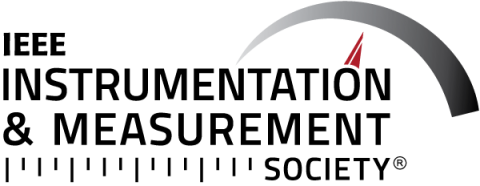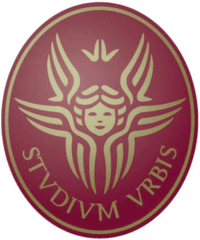Below are the Special Sessions that are being offered at MeMeA 2018.
Abstract
Like in any applied engineering field, a tight co-operation between academic and industrial researchers operating in the field of medical measurements is fundamental for an effective development of scientific knowledge. To this aim, the conference organizers have decided to promote an Industrial Special Session, reserved for representatives from the biomedical industrial world.
The proposed papers should present a new technology or capability that is being pursued and should be technical in nature. The final purpose is to make academic researchers acquainted with “hot topics” currently under development in the industrial world and, at the same time, allow for a fruitful exchange of ideas between the industrial and academic worlds.
TOPICS
Any topic, pertaining to measurement systems and/or methodologies applied to the biomedical field, is welcome.
Contacts
Emanuele Piuzzi
MeMeA 2018 Special Sessions Chair
[email protected]
Abstract
Fiber optic sensors (FOSs) have gained widespread attention and, in many cases, broad clinical acceptance for several medical applications. The good metrological properties, the possibility to perform distributed measurements, the small size, as well as the immunity to electromagnetic interferences make FOSs an emerging solution for monitoring parameters of interest for diagnostic and therapeutic applications. In addition, recent exciting developments promise to significantly increase the use of FOSs in medicine.
This special session aims at describing the current state-of-the-art of FOSs in medical applications, at providing a forum for reporting significant recent advances in the development of these sensors and their use in medicine, as well as at giving an opportunity of interaction for scientists, researchers and clinicians focusing on the development, characterization and use in medical fields of FOSs.
All the papers reporting about research related to the above-mentioned topics are welcome.
TOPICS
Paper submissions on all areas of FOSs for medical applications are welcome. Topics of interest include but are not limited to:
- Design and characterization of FOSs for medical applications
- FOSs for monitoring effects of therapies
- Measurement of physical parameters in medicine by FOSs
- Magnetic Resonance-compatible FOSs
- Fiber optic-based smart textile for vital signs monitoring
- Health state monitoring by FOSs
- Application of FOSs in robotics
Organizers
Taesung Kim
School of Mechanical Engineering, Sungkyunkwan University, 2066 Seobu-ro, Jangan-gu, Suwon, Gyeonggi-do, 16419, Republic of Korea
[email protected]
Alberto Vallan
Politecnico di Torino, Department of Electronics and Telecommunications, Corso Duca degli Abruzzi, 24, 10129 Torino, Italy
[email protected]
Emiliano Schena
Università Campus Bio-Medico di Roma, Unit of Measurement and Biomedical Instrumentation, Via Alvaro del Portillo, 21, 00128, Rome, Italy
[email protected]
Abstract
While paving the way towards the "no-scar surgery", the spread of minimally invasive procedures in medical panorama is gathering the efforts of engineers and scientists for the development of suitable tools and measurement systems.
Percutaneous procedures, endoscopic and laparoscopic surgery, image-guided therapies, as well as robotic-assisted minimally invasive surgery offer several advantages over conventional clinical approaches. For instance, the trauma and the pain for the patient are reduced, the treatment and recovery time can be decreased.
In order to provide information about the ongoing minimally invasive procedures, specific measuring systems based on light and flexible tools, or contactless measurement approaches, are desired.
This special session aims at presenting the up-to-date studies about minimally invasive measurement systems for both therapies and diagnosis.
TOPICS
Papers dealing with research related to the following topics are welcome:
- Minimally invasive and/or non-invasive measurement system in surgery
- Contactless monitoring systems
- Measurement systems in robotic surgery
- Sensors for monitoring the effects of minimally invasive thermal treatments
- Diagnostic image-based measurements of physical (e.g., temperature, strain, thickness, flow..) and chemical (e.g., concentrations, tissue oxygen level..) parameters
Organizers
Paola Saccomandi
Institute of Image-guided Surgery (IHU)
1 place de L'Hopital, 67091, Strasbourg CEDEX, France
[email protected]
Emiliano Schena
Università Campus Bio-Medico di Roma,
Unit of Measurement and Biomedical Instrumentation,
Via Alvaro del Portillo, 21, 00128, Rome, Italy
[email protected]
Giuseppe Quero
"Agostino Gemelli" Hospital, Catholic University,
Department of Digestive Surgery,
Largo A. Gemelli 8, Rome, Italy
[email protected]
ABSTRACT
This Special Session represents an interesting opportunity for engineers, doctors and researchers to provide an increase of knowledge and an easier diffusion of the most recent developments in the field of measurements related to medical and cosmetic applications for Dermatology.
TOPICS
All the papers reporting original contributions related to the above-mentioned topics are welcome.
Topics of interest include but are not limited to:
- Instrumentation and Measurements for cosmetic dermatology,
- Instrumentation and Measurements for medical dermatology,
- Automatic mole mapping and segmentation,
- New perspectives in Computerized epiluminescence.
Organizers
Maria Riccio
University of Sannio
[email protected]
Francesco Cusano
Rummo Hospital, Italy
[email protected]
Abstract
Motion-capture measurement systems and techniques may be used in a range of applications for the estimation of physiological values, in both clinical and research settings.
Different kind of sensors can be used to collect motion, i.e. RGB cameras, IR optoelectronic systems, IMU devices, wearable tissue-embedded strain sensors, etc... The possibility to perform non-invasive measurements (with contact and contactless technologies), makes motion capture technology an emerging solution for monitoring several physiological parameters for diagnostic, monitoring and therapeutic purposes.
This special session is focused on current state-of-the-art of motion capture systems in medical applications. The session provides a forum for scientists, researchers and clinicians, for discussing significant recent advances in the development of measurement devices, and in the design of methods and techniques used to extract physiological data.
Topics
Papers dealing with research related to the following topics are welcome:
- Design and characterization of systems for capturing motion.
- Characterization of systems, techniques and methods for subject monitoring.
- Contactless monitoring systems for medical applications.
- Wearable monitoring systems for physiological monitoring.
Organizers
Carlo Massaroni
Università Campus Bio-Medico di Roma
[email protected]
Fabrizio Patanè
University Niccolò Cusano
[email protected]
Abstract
This session concerns approaches to objectification and measurement in clinical contexts - the central theme being the key diagnostic issues related to the inference of phenomena underlying behavioral, perceptual and physiological measurements. Such issues demand that evaluation is based on standardized, replicable and transferable criteria. Improved diagnostic validity may be achieved by combining new technologies with new models representing reality and clinical dimensions. This session will review new methods of measurement used in the clinical sciences, comparing them with conventional ones in terms of objectivity, sensitivity, minimization of systemic errors and technical costs. An appraisal, based on the methodological criteria of reliability and validity including the problem of poor collaborative conditions i.e., when patients withhold, exaggerate or distort their responses will be considered and guidelines for use will be suggested. How to disseminate this information for maximum benefit i.e., both in clinical contexts and for lay understanding, will be considered.
Topics
- Mind
- Brain
- Memory
- Decision-making
- Social and emotional dimensions
- Behavior
- Attention and perception
- Assessment and measurement
- Psychometrics
- Testing
Organizers
Mirian Agus
University of Cagliari, Department of Pedagogy, Psychology, Philosophy
[email protected]
Pier Luigi Marconi
Artemis Neurosciences, Roma
[email protected]
Paul Kenneth Hitchcott
University of Cagliari, Department of Pedagogy, Psychology, Philosophy
[email protected]
Maria Pietronilla Penna
University of Cagliari, Department of Pedagogy, Psychology, Philosophy
[email protected]
Abstract
Ultrasound has very wide range of applications in medicine. Ultrasonic diagnostic imaging techniques have many innovative improvements since last 10 years. The most commonly used methods are pulsed-echo (2.0 to 7.0 MHz) and Doppler imaging (2 to 4 MHz). Available systems offer a real-time imaging, where the moving fetus is displayed on a color monitor. Pulse-echo techniques are employed with a transducer array that is used and the reflected signals are monitored.
Therapeutic ultrasound techniques including physiotherapy, healing, cauterization etc. have numerous applications in medicine too. For example, HIFU transducer that produces up to few hundreds of watts in MHz frequencies is used as an emerging and a novel tool in cancer therapy in medicine. Diagnostic and therapeutic ultrasound techniques need to be supported by metrological tools in order to establish the safe use of ultrasound.
Topics
Special session on novel techniques in medical ultrasound will cover the topics below:
- Diagnostic ultrasound (pulsed echo and Doppler imaging)
- Metrology for ultrasound
- Ultrasound dose concept
- Ultrasound treatment techniques (i.e lithotripsy)
- Ultrasound treatment planning
- Ultrasound power and pressure field characterization of HIFU transducers
- Characterization of temperature effect on tissue mimicking materials (TMM) induced by HIFU transducers
- Production techniques and measurements of TMM
- Transducers and systems
- EURAMET (European Association of National Metrology Institutes) health projects and new health call 2018
- Ultrasound in cosmetics (i.e. liposuction)
- Other ultrasound related therapeutic techniques
Organizer
Dr. Baki Karaböce
TÜBİTAK UME
[email protected]
Abstract
While being somewhat underrepresented in terms of general incidence, neuromuscular disorders determine a remarkable deterioration of quality life conditions, affecting the accuracy and efficiency with which the nervous system controls movement.
Electromyography (EMG) has been traditionally considered as the elective means to measure motor function in a variety of physiological and pathological conditions in this regard, as it is the technology able to most closely capture the way muscles are governed and act.
This special session aims at presenting recent advances in the use and analysis of EMG data to possibly predict, detect and quantify motor function, and its modifications driven by the presence of a variety of neuromuscular diseases. While being primarily focused in the presentation of processing means (including those associated with the theory of modular control), submissions related to the presentation of devices, technologies and systems are welcomed.
TOPICS
- EMG signal modelling and processing
- Sensing technologies for muscular function assessment
- Clinical applications of EMG data analysis
- EMG-based tools for rehabilitation and assistive technologies
Organizers
Maurizio Schmid
Roma Tre University
[email protected]
Diego Torricelli
Consejo Superior de Investigaciones Cientificas
[email protected]
Giacomo Severini
University College Dublin
[email protected]
Cristiano De Marchis
Roma Tre University
[email protected]




